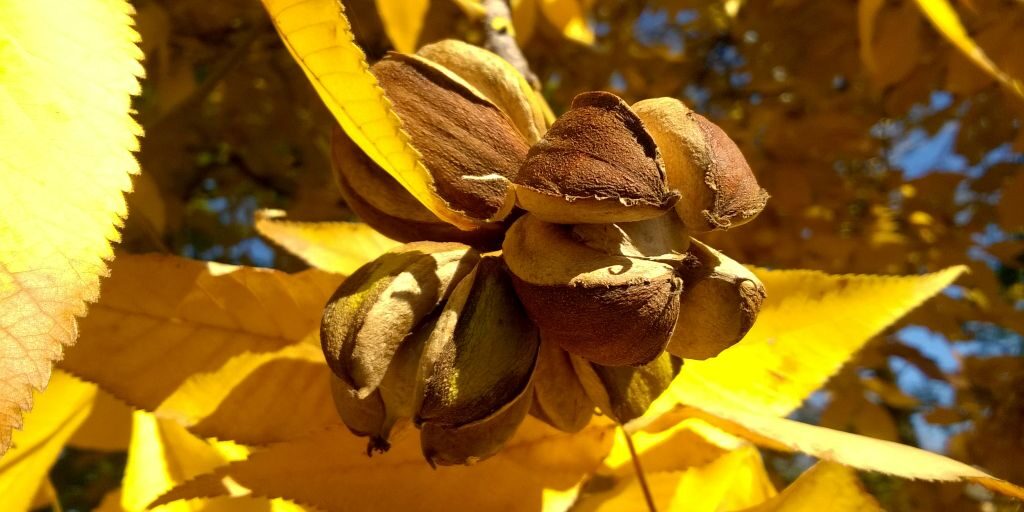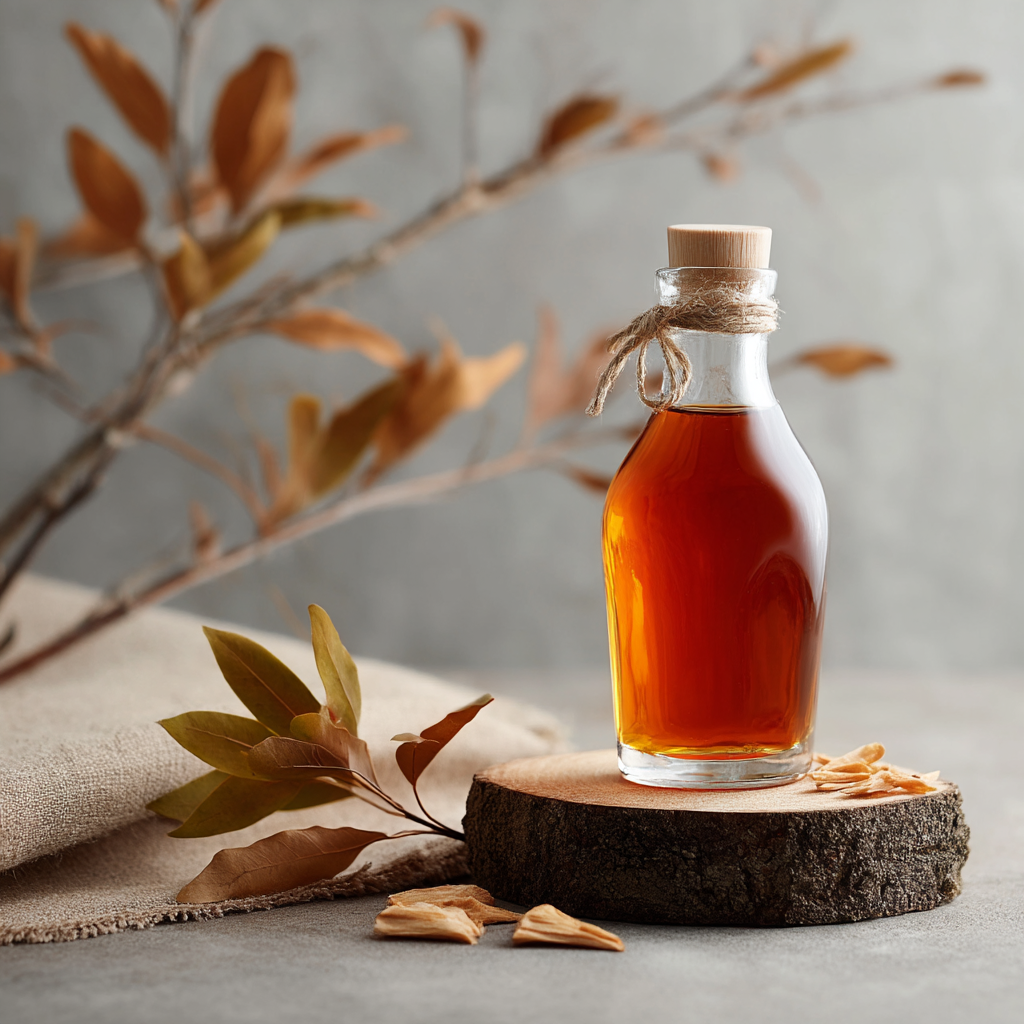
Hickory
Towering gracefully in North American forests, hickory trees are more than just providers of shade and nuts. These resilient trees have been cherished for centuries, not only for their robust wood but also for their medicinal properties and nutritional benefits. From their distinctive bark to their nourishing nuts, hickories are a testament to nature’s generosity.
What Is Hickory?
Hickory trees belong to the Carya genus, encompassing around 12 species native to North America. They are deciduous hardwoods known for their strength, longevity, and versatility. Common species include the Shagbark Hickory (Carya ovata), Pignut Hickory (Carya glabra), and Shellbark Hickory (Carya laciniosa).
These trees are characterized by:
- Bark: Shagbark hickories have peeling, shaggy bark, while others exhibit smoother or scaly textures.
- Leaves: Compound leaves with 5 to 9 leaflets, arranged alternately on the stem.
- Nuts: Hard-shelled nuts encased in a husk that splits open upon maturation.
Hickories thrive in various habitats, from upland forests to fertile bottomlands, adapting to a range of soil types and climatic conditions.
Parts Used
- Bark: Traditionally used in teas and decoctions for its medicinal properties.
- Nuts: Consumed for their rich, buttery flavor and nutritional value.
- Wood: Valued for its strength and used in tool handles, furniture, and smoking meats.
Benefits of Hickory
1. Medicinal Uses
Native American tribes utilized hickory bark in various remedies. Teas made from the inner bark were employed to treat ailments such as arthritis, digestive issues, and colds. The bark’s astringent properties made it useful for wound care and as a general tonic.
2. Nutritional Value
Hickory nuts are a rich source of healthy fats, protein, and essential minerals. They provide a high-calorie food source, beneficial for energy and weight gain, especially during recovery from illness or injury.
3. Culinary Applications
Beyond their nuts, hickory bark has been used to flavor syrups and infusions. When toasted and steeped, the bark imparts a smoky, nutty flavor, ideal for enhancing desserts and beverages.
4. Environmental Contributions
Hickory trees play a vital role in ecosystems, providing habitat and food for wildlife. Their presence enhances biodiversity and supports various species, including birds and insects.
How to Use Hickory
Medicinal Preparations
- Bark Tea: Simmer small pieces of inner bark in water to create a tea traditionally used for its anti-inflammatory and digestive benefits.
- Poultices: Crushed bark applied to the skin may aid in treating wounds and inflammation.
Culinary Uses
- Nut Consumption: Hickory nuts can be eaten raw, roasted, or incorporated into baked goods for added flavor and nutrition.
- Flavoring: Toasted bark can be infused into syrups or dairy to impart a unique smoky flavor to dishes and desserts.
How to Identify Hickory
Key Identification Features:
- Leaves: Compound leaves with 5–9 leaflets, each with serrated edges.
- Bark: Shagbark hickories have distinctive peeling bark, while others may have smoother or scaly bark.
- Nuts: Encased in a green husk that splits open upon ripening, revealing a hard-shelled nut inside.
- Growth Habit: Tall trees with a straight trunk and a rounded crown.
Observing these characteristics can help differentiate hickory trees from other hardwoods in the forest.
Where to Find Hickory
Hickory trees are predominantly found in the eastern United States, thriving in mixed hardwood forests. They prefer well-drained soils and are commonly seen in upland areas, valleys, and along streams. Their adaptability allows them to grow in various soil types, contributing to their widespread presence.
How to Grow Hickory
- Seed Collection: Gather mature hickory nuts in the fall.
- Stratification: Store nuts in a moist, cold environment (around 34–41°F or 1–5°C) for 90–120 days to break dormancy.
- Planting: Sow stratified nuts in well-drained soil, approximately 1–2 inches deep.
- Location: Choose a sunny spot with ample space, as hickories can grow quite large.
- Maintenance: Water young trees regularly and protect them from pests and wildlife.
Note that hickory trees have a slow growth rate and may take several years to establish and produce nuts.
A Word of Caution
While hickory nuts are nutritious, they are high in calories and fats. Moderation is key, especially for individuals monitoring their caloric intake. Additionally, some people may have allergies to tree nuts, so it’s essential to ensure no allergic reactions occur when consuming hickory nuts for the first time.
When foraging bark for medicinal or culinary uses, always harvest responsibly. Avoid taking large amounts from a single tree, and never strip bark from live trees, as this can harm or kill them. Instead, collect naturally shed bark or from fallen branches.
A Recipe To Try
 Hickory Bark Syrup
Hickory Bark Syrup
Ingredients:
- 2 cups of naturally shed hickory bark
- 4 cups of water
- 2 cups of sugar
Instructions:
- Clean the hickory bark to remove any debris.
- Toast the bark in an oven at 350°F (175°C) for about 10 minutes to enhance flavor.
- In a pot, combine toasted bark and water. Bring to a boil, then simmer for 30 minutes.
- Strain the liquid to remove bark pieces.
- Return the liquid to the pot, add sugar, and simmer until it reaches a syrupy consistency.
- Allow to cool, then bottle and refrigerate.
This syrup can be used as a sweetener for pancakes, desserts, or beverages, imparting a unique smoky flavor.
The Forgotten Medicine Cabinet in Your Backyard
Hickory trees stand as silent sentinels in our forests, offering more than just shade and nuts. Their bark and nuts have nourished and healed generations, embodying the wisdom of traditional herbal practices. Incorporating hickory into your life connects you to a legacy of natural healing and sustenance.
For those eager to delve deeper into the world of herbal remedies and discover the hidden treasures in their own backyards, The Forgotten Home Apothecary is an invaluable resource. This guide offers insights into identifying, harvesting, and utilizing common plants for health and wellness.
Unlock the secrets of nature’s pharmacy with The Forgotten Home Apothecary. Visit: the-forgotten-home-apothecary.com
DIY Anti-Inflammatory Ramp Vinegar
The Amish Pain Elixir (Video)
Hawthorn Berry Tea: A Heart-Healthy Herbal Brew
Pine Pollen for Stress Recovery: Nature’s Adaptogen for Modern Challenges

 Hickory Bark Syrup
Hickory Bark Syrup